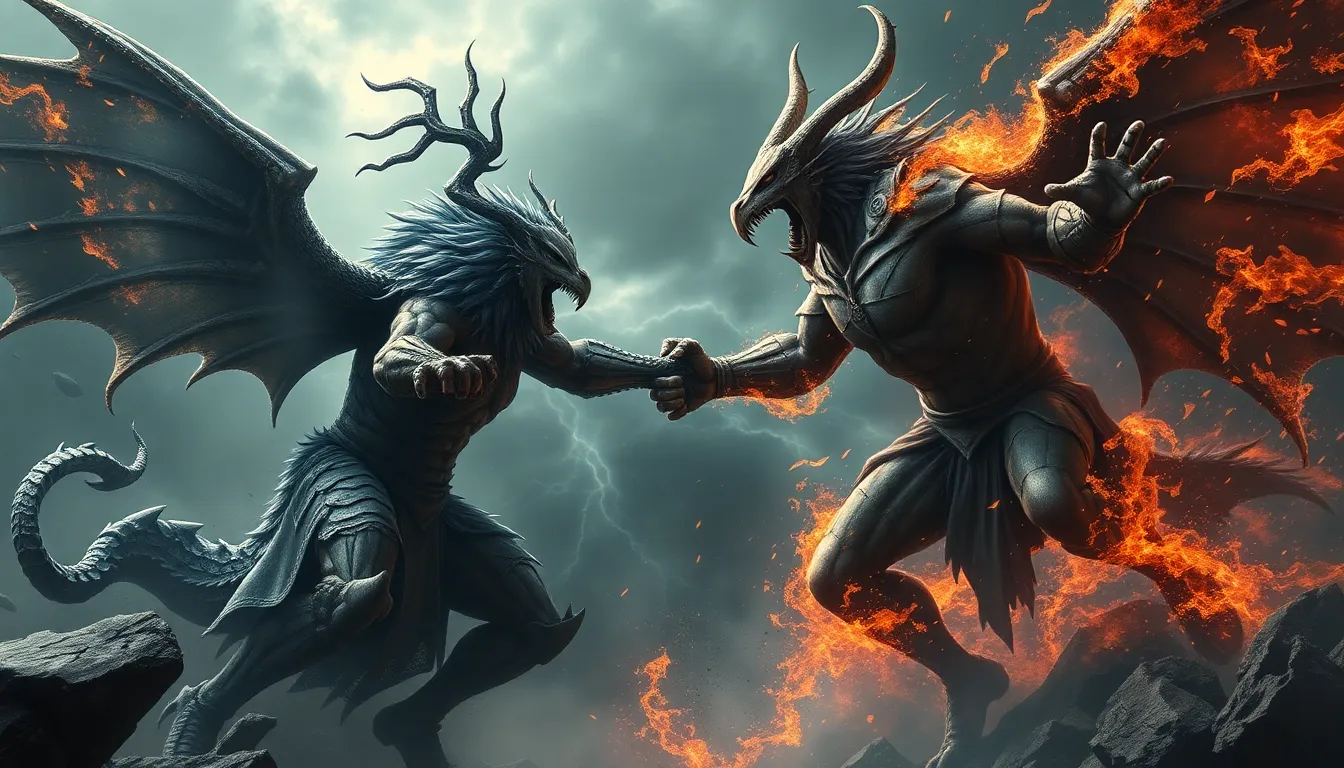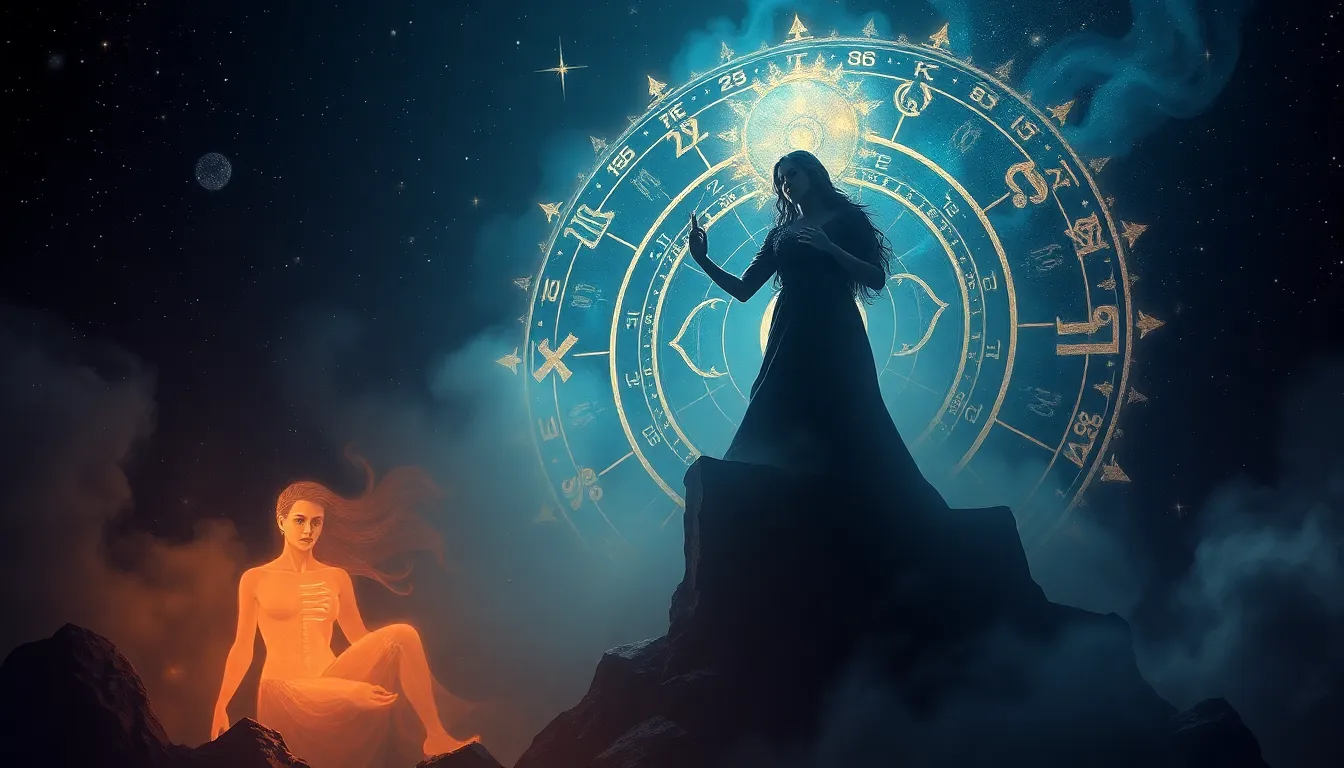Clash of the Ancients: The Most Dramatic Mythological Battles!
1. Introduction to Mythological Battles
Mythological battles are epic confrontations that occur between gods, heroes, and mythical creatures within various cultural narratives. These battles often serve as central themes in myths, reflecting the values, fears, and beliefs of ancient societies.
Throughout history, storytelling has woven these dramatic confrontations into the fabric of culture, allowing generations to explore complex themes such as good versus evil, fate, and the nature of existence. This article delves into some of the most riveting mythological battles across different cultures, showcasing their significance and the lessons they impart.
2. The Titans vs. The Olympians: A Clash of Generations
The Titanomachy, or the War of the Titans, is one of the most significant battles in Greek mythology. It represents the struggle between the older generation of gods, the Titans, led by Cronus, and the younger Olympians, led by Zeus.
Key figures in this epic clash include:
- Cronus: The ruler of the Titans who feared being overthrown by his children.
- Zeus: The youngest son of Cronus, destined to lead the rebellion against his father.
- Hera, Poseidon, and Hades: Zeus’s siblings who joined him in the fight.
This battle not only resulted in the overthrow of the Titans but also established the reign of the Olympian gods, shaping the landscape of Greek mythology for centuries to come.
3. The Battle of Ragnarok: Norse End Times
Ragnarok, often referred to as the “Twilight of the Gods,” is a series of events in Norse mythology that culminate in a great battle leading to the death of many gods, including Odin and Thor. This apocalyptic event is characterized by an overwhelming sense of fate and inevitability.
Key characters involved in Ragnarok include:
- Odin: The All-Father who sacrifices himself for knowledge.
- Thor: The thunder god, known for his strength and bravery.
- Loki: The trickster god who plays a pivotal role in the events leading to Ragnarok.
- Fenrir: The monstrous wolf destined to kill Odin.
The themes of fate, destruction, and rebirth resonate throughout this myth, emphasizing the cyclical nature of life and the inevitable end that leads to new beginnings.
4. The Epic of Gilgamesh: The Fight Against Humbaba
The Epic of Gilgamesh is one of the oldest known literary works, originating from ancient Mesopotamia. This epic narrates the adventures of Gilgamesh, a demigod king, and his companion Enkidu.
A pivotal moment in the epic is their confrontation with Humbaba, the monstrous guardian of the Cedar Forest.
- Gilgamesh: The heroic king who seeks glory and immortality.
- Enkidu: The wild man who becomes Gilgamesh’s closest friend.
- Humbaba: The fearsome creature representing the untamed aspects of nature.
This battle symbolizes the struggle between nature and civilization, showcasing humanity’s desire to conquer the wild while also revealing the consequences of such actions.
5. The Mahabharata: The Kurukshetra War
The Mahabharata is a monumental Indian epic that tells the story of the Kurukshetra War, a massive conflict between two factions of the same royal family: the Pandavas and the Kauravas.
The war serves as a backdrop for profound philosophical discussions, particularly in the Bhagavad Gita, where Krishna imparts wisdom to the warrior Arjuna.
- The Pandavas: The five brothers fighting for their rightful kingdom.
- The Kauravas: Their cousins, who represent greed and injustice.
This epic battle is not just a physical confrontation but also a moral and spiritual struggle, exploring themes of duty, righteousness, and the complexities of human nature.
6. The Battle of the Titans in Hindu Mythology
In Hindu mythology, the battle between the Devas (gods) and Asuras (demons) is a recurring theme that embodies the eternal struggle between good and evil.
A key event in this conflict is the churning of the ocean, which produced the nectar of immortality, Amrita.
- Devas: The benevolent gods who strive to maintain cosmic order.
- Asuras: The powerful demons who seek to disrupt this order.
The themes of good versus evil and the quest for balance in the universe are central to this myth, illustrating the cyclical nature of conflict and resolution in the cosmos.
7. Egyptian Mythology: The Struggle Between Set and Osiris
The story of Osiris and Set is a foundational myth in Egyptian mythology, depicting the themes of betrayal, death, and resurrection. Set, the god of chaos and disorder, betrays his brother Osiris, leading to a battle for the throne of the underworld.
- Osiris: The god of the afterlife, symbolizing resurrection and regeneration.
- Set: The antagonist who represents chaos and violence.
- Horus: The son of Osiris, who seeks vengeance for his father’s murder.
This myth emphasizes the cyclical nature of life and death, illustrating the belief in resurrection and the eternal struggle between order and chaos.
8. Celtic Mythology: The Second Battle of Mag Tuired
The Second Battle of Mag Tuired is a significant event in Celtic mythology, representing the conflict between the Tuatha Dé Danann, the race of gods, and the Fomorians, a group of monstrous beings.
Key characters and their roles include:
- Lugh: The hero and warrior of the Tuatha Dé Danann.
- Balor: The evil king of the Fomorians, known for his destructive eye.
This battle is not only a fight for territory but also symbolizes the struggle between civilization and chaos, with themes of heroism, sacrifice, and the importance of community woven throughout the narrative.
9. The Influence of Mythological Battles on Modern Culture
The legacy of these mythological battles extends far beyond their ancient origins. They have been represented in various forms of modern literature, film, and art, continuing to capture the imagination of audiences today.
- Literature: Many contemporary authors draw inspiration from these myths, reinterpreting them for modern audiences.
- Film: Movies often portray epic confrontations, showcasing the timeless appeal of these narratives.
- Art: Visual representations of mythological battles continue to influence artists around the world.
These narratives shape our understanding of heroism, morality, and the human experience, illustrating how ancient stories remain relevant in contemporary culture.
10. Conclusion: The Timeless Nature of Mythological Battles
Mythological battles serve as powerful narratives that resonate through time, reflecting the complexities of human nature and the struggles that define our existence. From the clash of Titans to the apocalyptic visions of Ragnarok, these stories encapsulate the eternal themes of conflict, morality, and the quest for meaning in an ever-changing world. As we continue to explore and reinterpret these ancient tales, their timeless nature ensures they remain a vital part of our cultural heritage.



